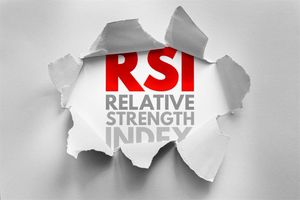-- The plastic bonded magnet market is witnessing a pronounced evolution as global industries increasingly move towards advanced materials solutions that offer the ideal combination of performance and processability. Forecasts for 2025 indicate that this segment, once considered a niche within the larger magnetics market, is now establishing itself as a critical enabler for sectors ranging from automotive and electronics to medical devices and renewable energy. Driven by technological innovation, environmental regulations, and shifting supply chain dynamics, the market’s landscape offers several noteworthy trends that are reshaping both demand and development strategies.
Plastic bonded magnets, also known as polymer bonded magnets, are manufactured through the integration of magnetic powders (usually ferrite or rare-earth materials) with polymer resins. This composite approach allows for injection molding and complex shaping, making these magnets appealing for applications requiring high precision and integration into intricate assemblies. The market’s emphasis on miniaturization and versatility directly aligns with these properties.
A major force impacting the market in 2025 is the continued electrification of the automotive sector. Electric vehicles (EVs) require lightweight, robust, and highly reliable magnetic components in motors, sensors, and auxiliary devices. Dr. Yuki Nakamura, a leading materials scientist from the Japan Magnetics Association, notes, “Plastic bonded magnets are finding increasingly sophisticated applications in EV motor architectures. Their ability to deliver near net-shape production with minimal post-processing aligns with automakers’ target for high-volume, low-waste manufacturing.” Recent surveys reveal that automotive OEMs are transitioning from traditional sintered magnets to bonded types for certain motor subcomponents, driven by the need to reduce vehicle weight and manufacturing complexity. The downstream implications include tighter supply chains for specialty polymer grades and increased scrutiny over magnetic powder sourcing, particularly rare earth elements.
The rare earth supply bottleneck remains a persistent concern within the industry. As demand for neodymium and samarium-based magnets rises, geopolitical risks and environmental regulations have become defining factors in market strategy. According to the European Magnetics Observatory's 2025 report, “Manufacturers are increasingly exploring ferrite-based plastic bonded magnets and hybrid formulations in response to both cost pressures and supply constraints associated with rare earths.” This trend is further magnified by regulatory harmonization initiatives across the EU and North America, which mandate the responsible sourcing of critical raw materials and the use of recyclable/responsibly sourced polymer matrices. Consequently, market players are ramping up research into both ferrite composites—which offer a balance of performance and cost—and recycled rare earth powder production technologies.
Another significant trend emerging in 2025 is the rapid adoption of plastic bonded magnets in smart electronics and IoT devices. The miniaturization push in consumer electronics, wearables, and home automation has led OEMs to prioritize magnet solutions that support high-volume production while retaining optimal magnetic and mechanical performance. Prof. Sven Mueller, senior engineer at the Fraunhofer Institute for Manufacturing Technology, explains, “Bonded magnets are ideally suited for high-precision sensor assemblies where complex three-dimensional architectures are required. The integration with advanced polymers allows for unique component geometries that would be impossible with traditional magnets.” Current demand analytics show an uptick in new product launches for miniaturized stepper motors, micro actuators, and energy-harvesting modules where plastic bonded magnets are employed.
Emerging markets are also contributing to the evolution of the plastic bonded magnet segment. Markets in Southeast Asia, India, and Southern Africa—traditionally reliant on imported finished magnetic assemblies—are investing in local magnet compounding and molding plants. According to a 2025 market trend analysis by Magnetic Materials Asia, “Regional players in India and Vietnam have increased their share in global magnet supply, particularly for consumer electronics and appliance sectors. This is driven by robust government support for electronics manufacturing ecosystems and improved intellectual property protections.” The report specifically identifies a surge in joint ventures between local manufacturers and multinational polymer suppliers, aimed at leveraging domestic expertise with advanced compounding technologies.
Regulatory pressures regarding sustainability are another catalyst for innovation. Plastic bonded magnets have often been scrutinized due to their reliance on synthetic polymers, many of which are petrochemical-derived. With tightening plastics regulations and international agreements calling for reduced plastic waste, magnet manufacturers have accelerated the development of bio-based and recycled polymer matrices. In a recent expert roundtable published by Magnetics World in early 2025, Dr. Rachel Ingalls of the Green Materials Institute outlined, “We’re seeing significant interest in recycled nylon and bio-based polyamide formulations, particularly for European automakers who are subject to strict end-of-life recycling mandates.” Pilot production runs of magnets with recycled content have demonstrated equivalent magnetic properties, indicating a strong commercial future for these sustainable variants.
There is also a growing emphasis on advanced manufacturing methodologies that enable mass customization. Additive manufacturing (AM), particularly in the form of 3D printing with magnet-filled filaments, is gaining momentum for low-volume specialized magnets. According to a recent industry interview with Dr. Siri Pohl, technology evangelist at AddMagnet Solutions, “Additive manufacturing allows us to design magnet shapes and orientations that were previously impossible. For applications in medical devices, such as micro-robotics and minimally invasive diagnostic tools, 3D printed plastic bonded magnets offer a level of precision and customization unmatched by injection molding.” Although AM processes currently represent a minor share of total market volume, expert consensus suggests rapid growth in high-value segments such as aerospace sensors and bespoke industrial robotics.
This increasing complexity in product requirements demands robust simulation and quality assurance workflows. Advanced magnetic simulation tools now incorporate the anisotropy and demagnetization factors unique to polymer bonded magnets, enabling more accurate performance prediction in real-world environments. According to the April 2025 report by TechMag Simulation, “Many OEMs are requiring full digital twin models of bonded magnet assemblies prior to volume manufacturing. This reduces field failures and shortens the product qualification cycle.” Increased investment in digital twin development in Asia and North America is expected to raise the bar for entry-level suppliers and bolster the competitive position of technologically advanced producers.
Battery Energy Storage Systems Container (BESS Container) Market
Market consolidation trends have begun to take shape, with several mergers and acquisitions among polymer suppliers, magnetic powder producers, and specialist compounding firms. The rationale behind these strategic movements is to ensure secure access to both critical raw materials and proprietary compounding technologies. According to industry analyst Sarah Lim, “The market for plastic bonded magnets in 2025 is characterized by vertical integration. Companies are acquiring upstream powder producers to guarantee supply consistency and investing heavily in proprietary polymer blends that offer unique mechanical and magnetic properties.” This consolidation is leading to increased R&D investments, with the largest players pursuing differentiated product portfolios tailored to high-growth sectors such as medical imaging, renewable energy generation, and advanced robotics.
Regional diversification is also accelerating, with multiple governments pursuing local-content mandates for strategic materials, including magnets. The USA’s 2024 Strategic Manufacturing Act and China’s 2023 Rare Earth Conservation Policy are both resulting in domestic magnet compounding initiatives. These measures serve both to mitigate supply risks and stimulate technology innovation within national industries. Industry experts predict a sustained increase in the number of greenfield investment projects and joint ventures focused on advanced molding technologies and eco-friendly polymer matrices, particularly in the US Midwest and China’s Pearl River Delta manufacturing hubs.
About the company: pmarketresearch.com
Contact Info:
Name: Lacy Lee
Email: Send Email
Organization: pmarketresearch.com
Website: https://pmarketresearch.com/chemi/pressed-plastic-bonded-magnets-market/
Release ID: 89171012
Should you come across any errors, concerns, or inconsistencies within this press release's content, we urge you to reach out without delay by contacting error@releasecontact.com (it is important to note that this email is the authorized channel for such matters, sending multiple emails to multiple addresses does not necessarily help expedite your request). Our committed team will promptly address your feedback within 8 hours and take appropriate measures to resolve any identified issues or guide you through the removal process. Providing accurate and dependable information remains our utmost priority.





